How was the Mi-28 "Night Hunter"
Mi-28N officially adopted by the Ministry of Defense of Russia and is actively supplied to the troops. According to information for 2017, the Russian Air Force has more than 90 Mi-28N helicopters. The combat vehicle is also in demand in the international market. At least 15 Mi-28NE helicopters are in service with the Iraqi army. Attack helicopters are being delivered to Algeria, which in March 2014 signed a contract for the supply of 42 Mi-28NE helicopters. Helicopters have already taken part in the hostilities, the Russians were used against terrorists, being part of Aviation Russian Air Force groups in Syria, Iraqi were used in battles with terrorists of the Islamic State (IS, a terrorist organization, banned in Russia) in Iraq, in particular, they were widely used during Operation Fatah (attack on Mosul).
His first flight attack helicopter Mi-28 made 35 years ago, it happened 10 November 1982 year. Subsequently, at its base, the Mi-28H helicopter was put into service, which was put into service in the 2009 year. Its mass production began in Russia in 2006, in Rostov-on-Don, at the Rostvertol plant. According to the state armaments program before 2020, the Russian army should receive about 200 Mi-28H helicopters.
The Mi-28 helicopter is distinguished by outstanding flight performance. He is able to perform such aerobatics as the Nesterov loop, barrel, Immelman's coup, flying sideways, flying backwards. It is no coincidence that with the 2012, the Mi-28H helicopters are used by the aerobatic team of the Russian Air Force Berkuty, the group performs flights on six combat helicopters of this type.
History The creation of this amazing helicopter dates back to 1976, when the USSR Council of Ministers adopted a decree on the start of work on a new attack helicopter, which would have surpassed the Soviet Mi-24 and American Apache in service. The leading design bureaus of the country Kamov (Ka-50 “Black Shark” helicopter) and Mil (Mi-28 helicopter, General Designer Mark Weinberg) presented their competition works. Unlike the Ka-50, the Mil helicopter was developed in accordance with the traditional concept of a twin-rotor single-rotor machine with a tail rotor. At the same time, there was a division of functions between the crew members of the attack helicopter: the navigator-operator and the pilot.
Hero of the Soviet Union, test pilot Gurgen Karapetyan, who over the years of his work mastered 28 types of helicopters, gliders and airplanes, and with regard to their modifications - more than a hundred different aircraft, told interesting facts about the appearance of the helicopter and the first tests of the Mi-39 to TASS journalists. In total, he spent more than 5500 hours in the air, flew all types of helicopters created by the Mil Design Bureau, including the Mi-28. It was the test pilot of Mil Design Bureau Gurgen Karapetyan and test navigator Viktor Tsygankov for the first time raised a new experimental helicopter into the air on November 10 of the year 1982.
Gurgen Karapetyan recalls: “That day, unfortunately, Leonid Ilyich Brezhnev died. But despite this, the helicopter hovering took place at 11 in the morning. However, already in 12 hours flights were banned. During the first flight, we took off, hung in the air 5 minutes. We first climbed one meter, then five meters, moved left-right, back and forth, made turns with a small angular velocity, and then landed. ” According to the memories of the test pilot, this flight did not leave particularly vivid impressions. At the same time, the helicopter was quite stable and very sensitive in control. Later in November-December 1982 of the year during the tests pilots reached the speed of 60 km / h. After the first flights, all materials on them and the calculation materials of the Mil Design Bureau were submitted to the council at the USSR Ministry of Aviation Industry, after which approval was received for continued testing.
It is worth noting that at that time, the Mi-28 seriously competed with the Kamov product. The Ka-50 helicopter took off into the sky in June of the 1982 of the year, and the Mi-28 took off only in November. As Gurgen Karapetyan recalls, before the execution of the first flight, the transmission was destroyed. Therefore, until November in the design bureaus various improvements were made, and only at the end of autumn the helicopter was able to complete the first hovering. By that time, the Kamovians were able to go far ahead, therefore, in the Mil Millenium, it was necessary to think how to catch up.
A series of preliminary tests of the Mi-28 attack helicopter continued from 1982 to 1985 a year, they were parallel to the tests of the Ka-50 helicopter. In the end, the Ministry of Defense decided that Kamov’s company won the competition, but they didn’t agree with Mil Millenium Design Bureau with such a decision, knowing full well that it was easy to fly on a single-seat car, but effectively fighting was more difficult. According to the memoirs of Karapetyan, the Ka-50 helicopter at the Gorokhovetsky test site was carried out exactly the same as with the Mi-28. In this case, there was such a nuance: once the military crews flew simultaneously on the Ka-50 and Mi-28. Their task was - 25 goals. The crew of the Mi-28 helicopter found all the targets, and the Ka-50 only one.
The developers of the Mi-28 attack helicopter, as well as test pilots of Mil Design Bureau, urged the military leadership of the USSR that “the pilot at extremely low altitudes could not perform all the functions at once: fly the helicopter, search for targets, go around the terrain and obstacles and hit targets. " Gurgen Karapetyan explains that at the altitudes of 5-15 meters the tasks of one pilot are not able to perform, it is possible at the altitude of 30-50 meters, but then the probability of his defeat increases to 95%.
Gurgen Karapetyan recalled another incident that occurred during his stay in Afghanistan in 1980, along with the general designer of the Mil Design Bureau. Then, at the height of 50 meters, a combat helicopter Mi-24 was shot down. “Whether there a sniper got very good, or a stray bullet hit the pilot in the head. But the co-pilot did not have time to react, and from the height of 50 meters the Mi-24 fell and crashed, ”the test pilot says. After returning to Moscow in the design of the new Mi-28 helicopter, appropriate improvements were made, including the geometry of the cockpit. At the same time, Karapetyan turned to the general designer with a proposal that the entire helicopter cabin should be booked: not only its lower part, but also the glass. Later tests in which the cockpit of the Mi-28 was shot from the 20-mm Vulcan aircraft cannon (the main gun of NATO) showed excellent security results.
The concept of creating a double combat vehicle was confirmed, this approach was absolutely correct. At that time, the Americans had a similar situation, recalls the test pilot of the Mil Design Bureau - materials appeared in print in favor of the single-seater concept of the attack helicopter. Moreover, many articles came out to meetings of the state commission in the USSR, about a month or two before it was held. All this influenced the course of work. Only after testing at the Sikorsky firm in 1989 in the United States they wrote that in order to make the attack helicopter single-handed, it was necessary to automate the 36 of its systems, and the cost of such automation was “golden.
According to Karapetyan, in the process of creating a new helicopter, designers introduced various solutions and concepts designed to achieve improved ergonomics. As an example, the test pilot notes: to start the engine, on the Mi-24 helicopter, it was necessary to perform 144 operations, whereas on the new Mi-28 - the entire 18. The difference was significant. On the Mi-28, a large number of improvements were implemented that they were going to implement even on the Mi-24, but for one reason or another they were never implemented. For example, the Mi-24 had no night vision systems, while the Mi-28 became a 24-hour all-weather combat helicopter. At the same time, it is much more difficult to detect the helicopter itself at night than at daytime hours.
The international debut of the Mi-28A helicopter was in the 1989 year. 8 June car was first demonstrated at the French Air Show in Le Bourget. Soviet attack helicopter became a real star of the exhibition. At the same time, the first reaction of foreigners, according to Karapetyan’s recollections, was the following: “Ay, a copy of American Apache!”. He himself explained that the machines look alike, but it’s wrong to talk about copying, just people in the USSR and the USA thought about one direction in the development of a combat vehicle. At the same time, when foreigners learned about the solutions and concepts that were laid in the Mi-28, they really had a shock. From the point of view of Karapetyan, Apache and Mi-28 are completely different machines in terms of combat survivability and the comparison is not in favor of the American. In the face of the Mi-28, our army received a very good helicopter, which, by its effectiveness and combat survivability, is now one of the best in the world, summed up the honored test pilot.
Currently, the development of the combat helicopter Mi-28 continues. October 12 2016 of the year for the first time the Mi-28HM helicopter, which is a modernized version of the Mi-28Н helicopter, took off. Unlike the usual “Night Hunter”, in which the navigator-operator sits in the front cockpit and is limited in piloting capabilities of the combat vehicle, in the new helicopter full control is implemented in both cockpits. The Mi-28HM helicopter received a nadovulochnaya radar and a new aiming-flight-navigation complex, an improved radar station. It is assumed that the first batch of such helicopters can enter the troops already in 2018 year.
Work on the creation of the attack helicopter Mi-28HM (product 296) was launched in 2009 in the framework of the ROC "Avangard-3". The main task of the work was to modernize the existing Mi-28H “Night Hunter” helicopter using new units, units and systems. The combat, flight and operational qualities of the helicopter were planned to be improved by replacing a number of components. Also, part of the project work was related to the simplification of the production of machinery due to the rejection of components, the delivery of which may be associated with the occurrence of any problems.
When creating a modernized Mi-28H combat helicopter, the designers took full account of the experience in developing the Mi-28UB combat training version: they placed a second control kit in the front cockpit of the upgraded helicopter. In addition to this, the crew cabin was also upgraded: the pilot-operator and the commander will now receive extra-cabin information on the operation of all machine systems and on the environment in a more accessible form and in greater volume. This is intended to increase the situational awareness of the crew of the combat vehicle, which will facilitate the interaction and will help to increase the speed of decision-making, especially in difficult combat situations. Also, a new aiming-flight-navigation complex appeared on the helicopter, which received modern computational tools of increased speed. The cockpit of the Mi-28HM helicopter is securely armored, which should provide effective protection against armor-piercing bullets and shells of caliber up to 20 mm inclusive.
Advanced nadtulochnaya radar and increased ability to use modern high-precision weapons, including self-guided missiles, are also the business cards of the Mi-28HM helicopter. The use of precision weapons can significantly reduce the time the attack helicopter is in potentially dangerous situations. The advantages of a modernized car include good resistance to combat damage. This is achieved through the use of new design solutions and the latest materials. The design of the fuel system of the Mi-28HM helicopter eliminates the possibility of explosion or ignition of fuel in the tanks, and the rotor blades were made of composite materials. The blades allow you to safely complete the flight, even when they hit shells caliber 20-30 mm.
In addition to the Mi-28NM, another new modification has been created - the Mi-28UB, a training and combat helicopter with a double set of controls and a remote failure simulator, which retained all the functionality of the attack helicopter. The main difference of this model lies precisely in the presence of a dual control system that allows piloting a combat vehicle from both the pilot’s cabin and the operator’s cabin. Due to this, there is the possibility of more effective education and training of military pilots who need the practice of raids on "Night Hunters". Also in combat conditions in case of possible emergency situations on board, the second member of the crew will be able to take control of the helicopter. Mounted on the Mi-XNUMHUB, the failure simulation panel allows simulating for the trainee pilot various options for equipment failure in flight, which improves the trainee's training at times of crisis, and this in the case of real faults or accidents will help save his life.
According to Vadim Barannikov, the first deputy managing director of the Rostvertol aviation plant, under a three-year contract signed with the Russian Ministry of Defense for three years starting from 2017, the military will receive up to 10 combat training helicopters Mi-28UB (thus, the army at least 30 will be replenished with such machines). These helicopters have already passed the full range of factory tests. As the Ministry of Defense specified, in early November 2017, the first two Mi-28UB helicopters with dual control were taken to the troops, in the near future these vehicles will arrive at the 344-th Center for Army Aviation in Torzhok. According to the Aircraftcompare.com portal, the cost of one Mi-28UB is slightly higher than the cost of Mi-28H and ranges from 16,8 to 18 million dollars.
The fact that the domestic combat helicopter Mi-28 according to NATO codification received the nickname “Ravager” in due time, test pilot Gurgen Karapetyan considers very accurate. The experience of the combat use of this combat vehicle in Syria demonstrates that the epithet selected by the military of the North Atlantic alliance is absolutely correct.
Information sources:
http://tass.ru/armiya-i-opk/4713899
http://www.russianhelicopters.aero
http://www.airwar.ru/enc/ah/mi28nm.html
Open source materials
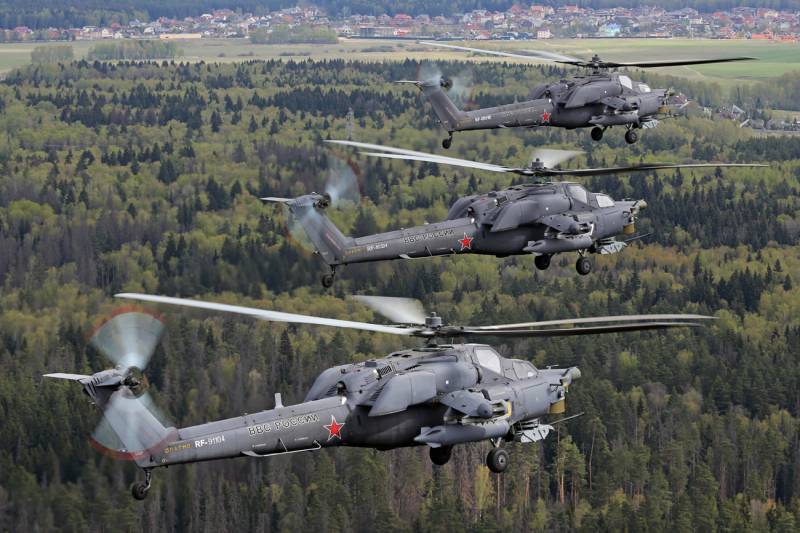
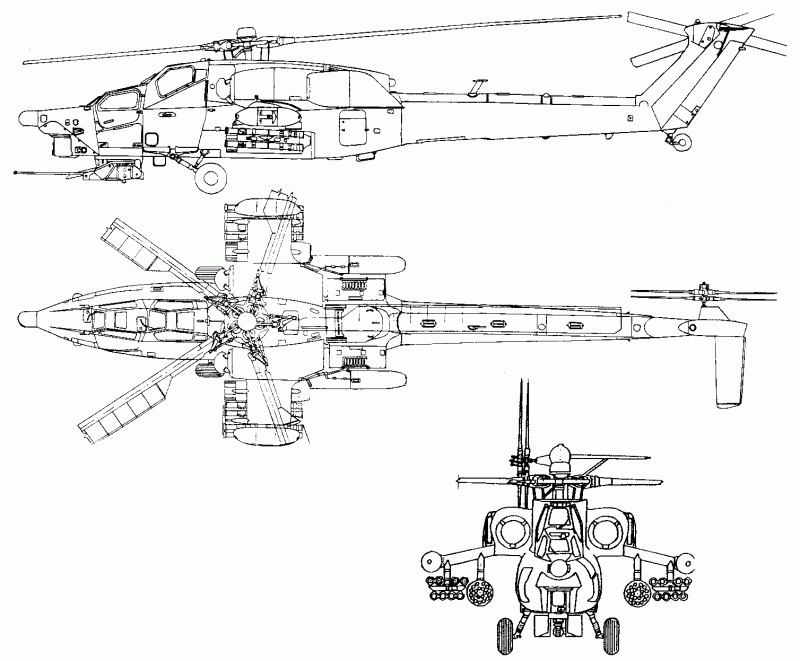
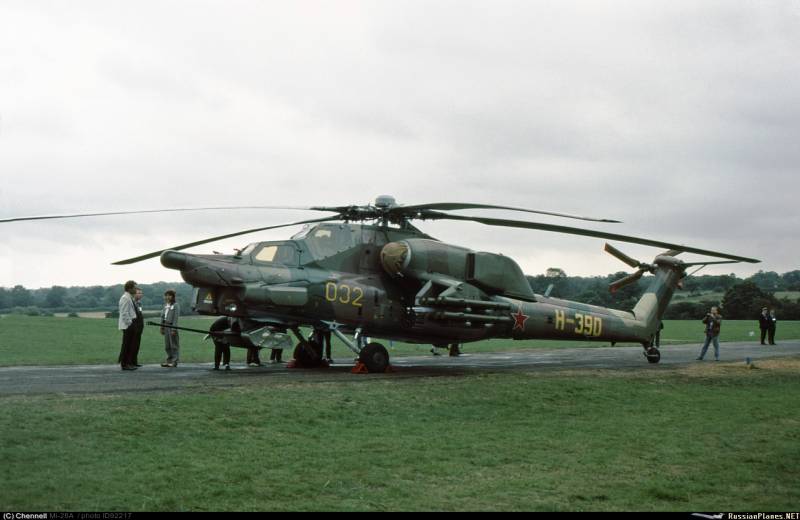
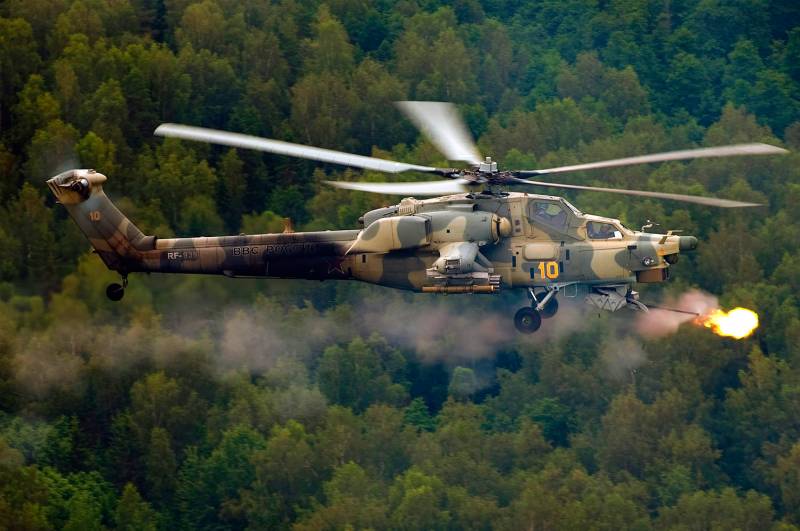
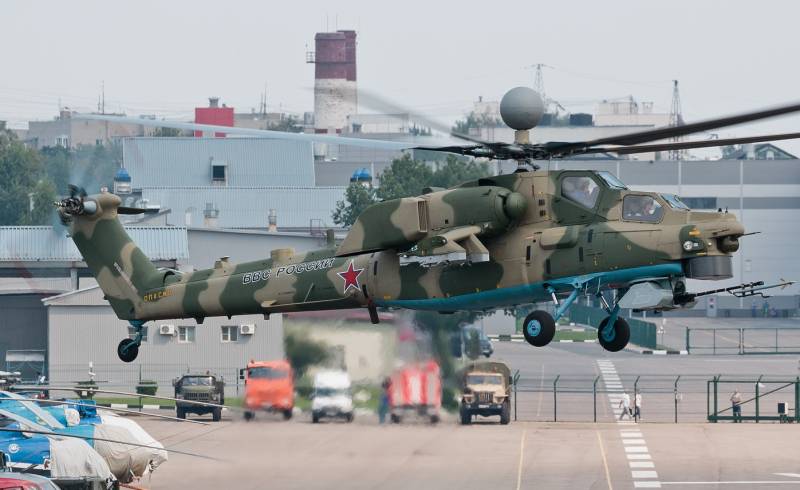
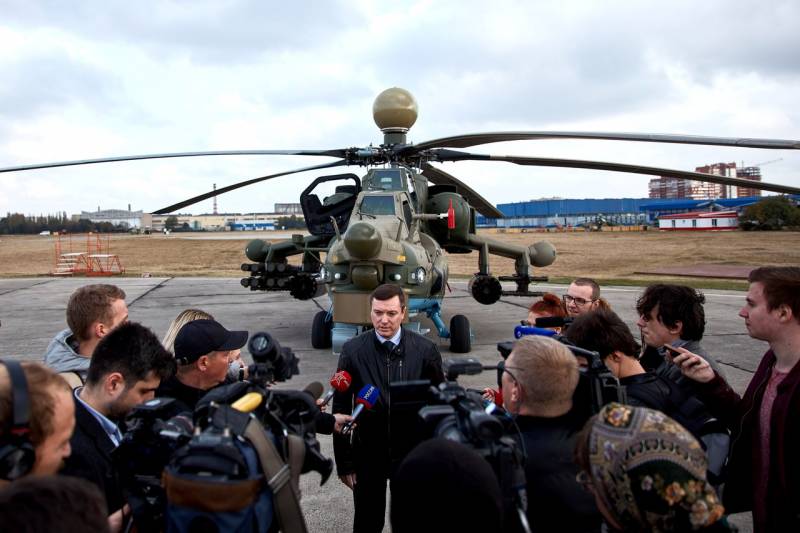
Information